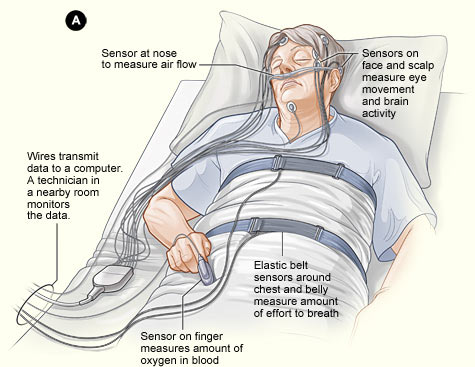Polysomnography (Sleep Studies)

Polysomnography (Sleep Studies): Overview, Applications, and Procedure
Polysomnography (Sleep Studies) is a comprehensive sleep study used to diagnose and evaluate sleep disorders by monitoring various physiological parameters during sleep. It is considered the gold standard for diagnosing sleep-related breathing disorders and other conditions affecting sleep quality. Below is a detailed overview of PSG, including its applications, procedure, and benefits.
Applications of Polysomnography
Diagnosis of Sleep Disorders:
- Obstructive Sleep Apnea (OSA): PSG is crucial for diagnosing OSA and determining its severity[4][5].
- Central Sleep Apnea: Identifies pauses in breathing due to lack of respiratory effort[4].
- Narcolepsy: Helps diagnose excessive daytime sleepiness and sudden sleep episodes[1][4].
- Periodic Limb Movement Disorder (PLMD): Detects involuntary leg movements during sleep[1][7].
- REM Sleep Behavior Disorder: Diagnoses abnormal behaviors during REM sleep[4].
Treatment Evaluation:
- CPAP and BiPAP Titration: Used to adjust pressure settings for optimal treatment of sleep apnea[1][6].
- Assessment of Treatment Efficacy: Monitors the effectiveness of ongoing treatments for sleep disorders[6].
Procedure of Polysomnography
Setting:
- In-Clinic PSG: Conducted in a sleep laboratory with continuous monitoring by a technologist[2][5].
- Home Sleep Apnea Testing (HSAT): Limited-channel monitoring for diagnosing sleep apnea in a home setting[4][6].
Parameters Monitored:
- Brain Waves (EEG): Measures electrical activity of the brain[3][6].
- Eye Movements (EOG): Tracks eye movements to identify sleep stages[3][6].
- Muscle Activity (EMG): Records muscle activity, especially in the chin and legs[3][6].
- Heart Rate (ECG): Monitors cardiac activity during sleep[3][6].
- Respiratory Effort and Airflow: Assesses breathing patterns and oxygen saturation[1][4].
Benefits and Limitations
Benefits:
- Comprehensive Diagnosis: Provides detailed insights into sleep patterns and disorders[5].
- Non-Invasive: Does not require surgical intervention or significant discomfort[5].
- Treatment Guidance: Helps tailor treatment plans based on specific sleep disorder characteristics[6].
Limitations:
- Cost and Accessibility: In-clinic PSG can be expensive and less accessible than home tests[4].
- Night-to-Night Variability: May require multiple tests to confirm diagnoses due to variability in sleep patterns[5].
Conclusion
Polysomnography is a critical diagnostic tool in sleep medicine, offering a comprehensive assessment of sleep disorders. While it provides valuable insights into sleep patterns and guides treatment, its limitations highlight the need for accessible alternatives like home sleep testing for certain conditions.
Consult with Our Team of Experts Now!
At DrStemCellsThailand (DRSCT)‘s Anti-Aging and Regenerative Medicine Center of Thailand, we emphasize comprehensive evaluations and personalized treatment plans of Cellular Therapy and Stem Cells for managing various health conditions. If you have questions about Polysomnography (Sleep Studies) or would like more information on our services, consult with our experts today!
Consult with Our Team of Experts Now!
References















